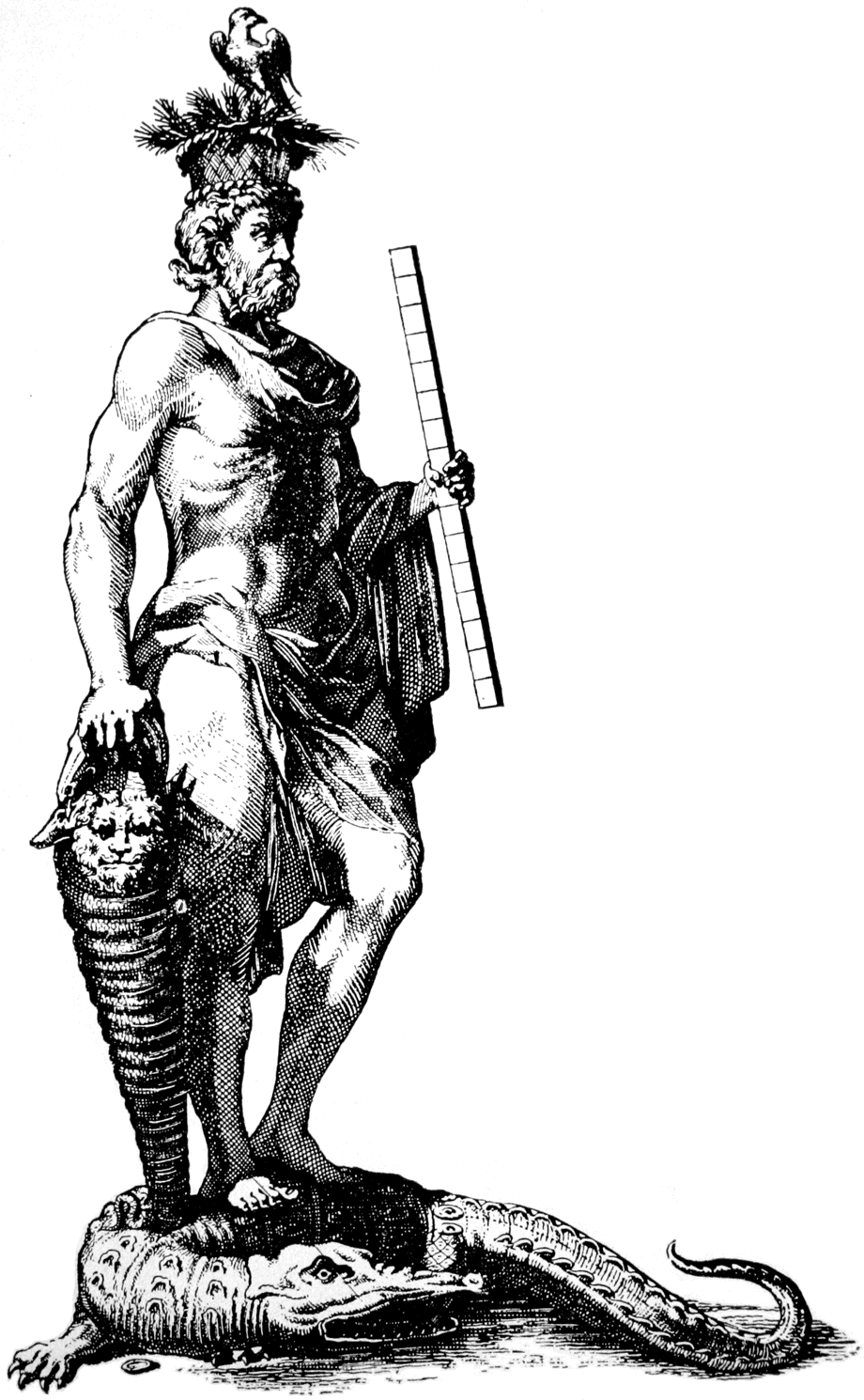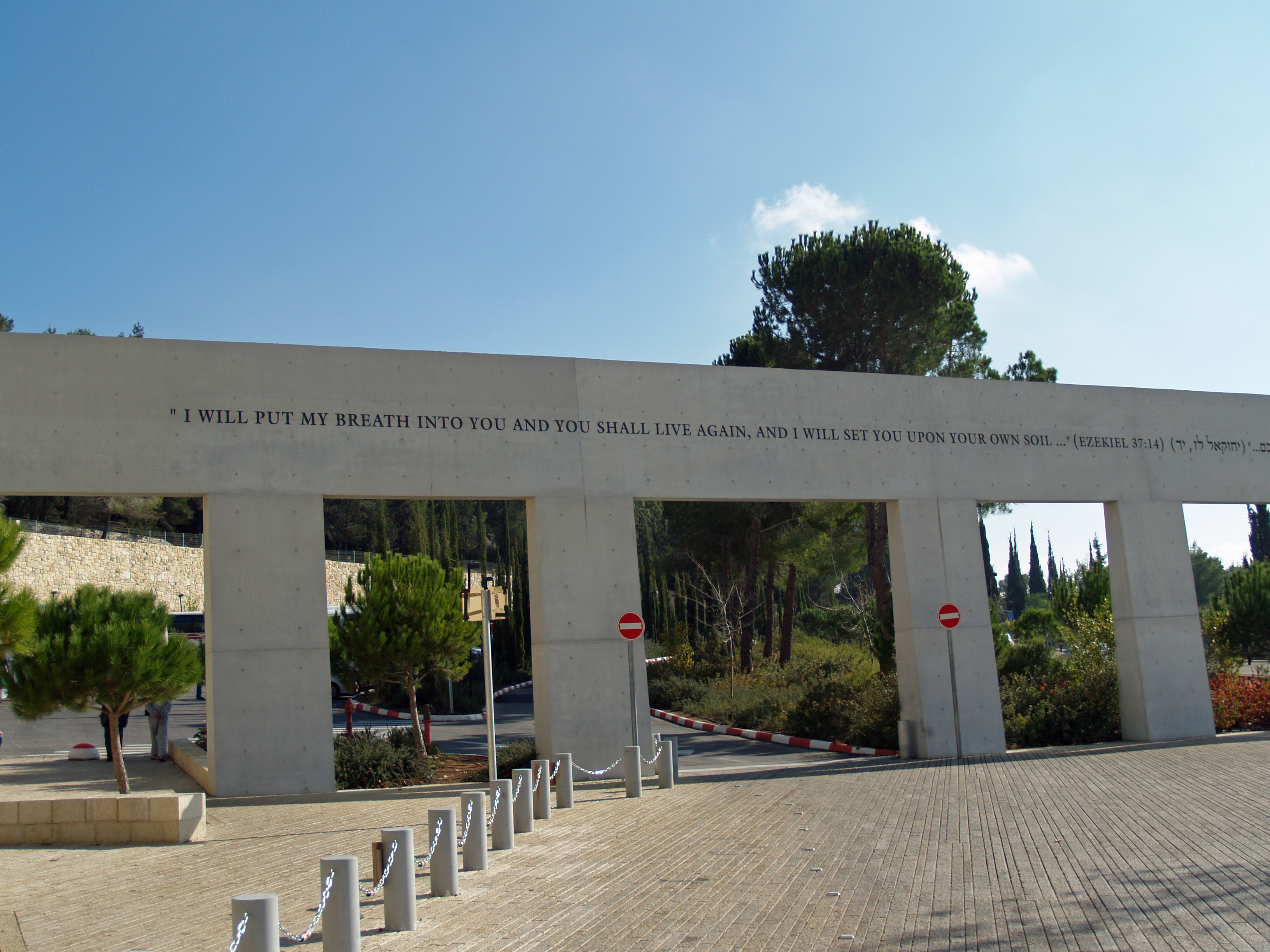|
Book Of Zechariah
The Book of Zechariah, attributed to the Hebrew prophet Zechariah, is included in the Twelve Minor Prophets in the Hebrew Bible. Historical context Zechariah's prophecies took place during the reign of Darius the Great and were contemporary with Haggai in a post-exilic world after the fall of Jerusalem in 587/586 BC. Ezekiel and Jeremiah wrote before the fall of Jerusalem while continuing to prophesy in the early exile period. Scholars believe Ezekiel, with his blending of ceremony and vision, heavily influenced the visionary works of Zechariah 1–8. Zechariah is specific about dating his writing (520–518 BC). During the exile, many Judahites and Benjamites were taken to Babylon, where the prophets told them to make their homes, suggesting they would spend a long period of time there. Eventually freedom did come to many Israelites, when Cyrus the Great overtook the Babylonians in 539 BC. In 538 BC, the famous Edict of Cyrus was released, and ... [...More Info...] [...Related Items...] OR: [Wikipedia] [Google] [Baidu] |
Nevi'im
Nevi'im (; he, נְבִיאִים ''Nəvīʾīm'', Tiberian: ''Năḇīʾīm,'' "Prophets", literally "spokespersons") is the second major division of the Hebrew Bible (the ''Tanakh''), lying between the Torah (instruction) and Ketuvim (writings). The Nevi'im are divided into two groups. The Former Prophets ( he, נביאים ראשונים ''Nevi'im Rishonim'') consists of the narrative books of Joshua, Judges, Samuel and Kings; while the Latter Prophets ( he, נביאים אחרונים ''Nevi'im Akharonim'') include the books of Isaiah, Jeremiah, Ezekiel, and the Twelve Minor Prophets. Synopsis The Jewish tradition counts a total of eight books in ''Nevi'im'' out of a total of 24 books in the entire Tanakh: there are four books of the Former Prophets, including Joshua and Judges; the collected ''Books of Samuel'' and ''Books of Kings'' are each counted as one book. Among the four books of the Latter Prophets, the major prophets (Isaiah, Jeremiah and Ezekiel) account f ... [...More Info...] [...Related Items...] OR: [Wikipedia] [Google] [Baidu] |
Iddo (prophet)
Iddo (Hebrew: עִדּוֹ ''ʿĪddō''; also Jedo; , ''Adei, Addō'') was a biblical prophet. According to the Books of Chronicles, he lived during the reigns of King Solomon and his heirs, Rehoboam and Abijah, in the Kingdom of Judah. Hebrew Bible Although little is known about Iddo, the Books of Chronicles say that the events of Solomon's reign, as well as Iddo's prophecies concerning king Jeroboam I of Israel, were recorded in writing. The alleged records composed by Iddo are no longer extant. He is also credited with a history of King Rehoboam and his son King Abijah. Other mentions A tradition of identifying Iddo with the unnamed prophet of 1 Kings 13 can be found in the Talmud, first-century BC Jewish historian Josephus, the fourth- and fifth-century Christian commentator Jerome, and the medieval Jewish commentator Rashi. The protagonist of 1 Kings 13 is identified simply as "a man of God" who prophesies against Jeroboam, as Iddo is said to have done elsewhere. After an unfo ... [...More Info...] [...Related Items...] OR: [Wikipedia] [Google] [Baidu] |
Measuring Rod
A measuring rod is a tool used to physically measure lengths and survey areas of various sizes. Most measuring rods are round or square sectioned; however, they can also be flat boards. Some have markings at regular intervals. It is likely that the measuring rod was used before the line, chain or steel tapes used in modern measurement. History Ancient Sumer The oldest preserved measuring rod is a copper-alloy bar which was found by the German Assyriologist Eckhard Unger while excavating at Nippur (pictured below). The bar dates from c. 2650 BC. and Unger claimed it was used as a measurement standard. This irregularly formed and irregularly marked ''graduated rule'' supposedly defined the ''Sumerian cubit'' as about , although this does not agree with other evidence from the statues of Gudea from the same region, five centuries later. Ancient India Rulers made from ivory were in use by the Indus Valley Civilization in what today is Pakistan, and in some parts of Western Indi ... [...More Info...] [...Related Items...] OR: [Wikipedia] [Google] [Baidu] |
Four Horns And Four Craftsmen
The four horns ( ''’ar-ba‘ qərānōṯ'') and four craftsmen ( ''’arbā‘āh ḥārāšîm'', also translated " engravers" or " artisans") are a vision found in Book of Zechariah, in Zechariah 1:21 in traditional English texts. In Hebrew texts 1:18-21 is numbered 2:1-4. The vision precedes the vision of A Man With a Measuring Line. Hebrew Bible text In the Talmud The four craftsmen are discussed in Babylonian Talmud Suk. 52b. Rav Hana bar Bizna attributed to Rav Simeon Hasida the identification of these four craftsmen as Messiah ben David, Messiah ben Joseph, Elijah, and the Righteous Priest In rabbinic Jewish eschatology, the Righteous Priest or Priest of Righteousness is a figure identified with one of the Four Craftsmen in a vision mentioned in the Book of Zechariah. He is found in the Talmud and Midrash. B. Sukkot 52b Accordin .... However David Kimhi interpreted the four craftsmen as four kingdoms. In later interpretation The imagery of craftsmen is g ... [...More Info...] [...Related Items...] OR: [Wikipedia] [Google] [Baidu] |
Four Horsemen Of The Apocalypse
The Four Horsemen of the Apocalypse are figures in the Christian scriptures, first appearing in the Book of Revelation, a piece of apocalypse literature written by John of Patmos. Revelation 6 tells of a book or scroll in God's right hand that is sealed with seven seals. The Lamb of God/Lion of Judah opens the first four of the seven seals, which summons four beings that ride out on white, red, black, and pale horses. In John's revelation the first horseman rides a white horse, carries a bow, and is given a crown as a figure of conquest, perhaps invoking pestilence, Christ, or the Antichrist. The second carries a sword and rides a red horse as the creator of (civil) war, conflict, and strife. The third, a food merchant, rides a black horse symbolizing famine and carries the scales. The fourth and final horse is pale, upon it rides Death, accompanied by Hades. "They were given authority over a quarter of the earth, to kill with sword, famine and plague, and by means of the be ... [...More Info...] [...Related Items...] OR: [Wikipedia] [Google] [Baidu] |
Oracle
An oracle is a person or agency considered to provide wise and insightful counsel or prophetic predictions, most notably including precognition of the future, inspired by deities. As such, it is a form of divination. Description The word ''oracle'' comes from the Latin verb ''ōrāre'', "to speak" and properly refers to the priest or priestess uttering the prediction. In extended use, ''oracle'' may also refer to the ''site of the oracle'', and to the oracular utterances themselves, called ''khrēsmē'' 'tresme' (χρησμοί) in Greek. Oracles were thought to be portals through which the gods spoke directly to people. In this sense, they were different from seers (''manteis'', μάντεις) who interpreted signs sent by the gods through bird signs, animal entrails, and other various methods.Flower, Michael Attyah. ''The Seer in Ancient Greece.'' Berkeley: University of California Press, 2008. The most important oracles of Greek antiquity were Pythia (priestess to Apoll ... [...More Info...] [...Related Items...] OR: [Wikipedia] [Google] [Baidu] |
Quality Of Life
Quality of life (QOL) is defined by the World Health Organization as "an individual's perception of their position in life in the context of the culture and value systems in which they live and in relation to their goals, expectations, standards and concerns". Standard indicators of the quality of life include wealth, employment, the environment, physical and mental health, education, recreation and leisure time, social belonging, religious beliefs, safety, security and freedom. QOL has a wide range of contexts, including the fields of international development, healthcare, politics and employment. Health related QOL (HRQOL) is an evaluation of QOL and its relationship with health. Engaged theory One approach, called engaged theory, outlined in the journal of ''Applied Research in the Quality of Life'', posits four domains in assessing quality of life: ecology, economics, politics and culture. In the domain of culture, for example, it includes the following subdomains of ... [...More Info...] [...Related Items...] OR: [Wikipedia] [Google] [Baidu] |
Gustave Doré (1832-1883) - The Bible (1865) - Zechariah 6-5
Paul Gustave Louis Christophe Doré ( , , ; 6 January 1832 – 23 January 1883) was a French artist, as a printmaker, illustrator, painter, comics artist, caricaturist, and sculptor. He is best known for his prolific output of wood-engravings, especially those illustrating classic books, including 241 illustrating the Bible. These achieved great international success, and he is the best-known artist in this printmaking technique, although his role was normally as the designer only; at the height of his career some 40 block-cutters were employed to cut his drawings onto the wooden printing blocks, usually also signing the image. In all he created some 10,000 illustrations, the most important of which were "duplicated in electrotype shells that were printed ... on cylinder presses", allowing very large print runs as steel engravings, "hypnotizing the widest public ever captured by a major illustrator", and being published simultaneously in many countries. The drawings given to th ... [...More Info...] [...Related Items...] OR: [Wikipedia] [Google] [Baidu] |
Deuteronomist
The Deuteronomist, abbreviated as either Dtr or simply D, may refer either to the source document underlying the core chapters (12–26) of the Book of Deuteronomy, or to the broader "school" that produced all of Deuteronomy as well as the Deuteronomistic history of Book of Joshua, Joshua, Book of Judges, Judges, Books of Samuel, Samuel, Books of Kings, Kings, and also the Book of Jeremiah. The adjectives "Deuteronomic" and "Deuteronomistic" are sometimes used interchangeably; if they are distinguished, then the first refers to the core of Deuteronomy and the second to all of Deuteronomy and the history. The Deuteronomist is one of the sources identified through Source criticism (biblical studies), source criticism as underlying much of the Hebrew Bible. Among source-critical scholars, it is generally agreed that Deuteronomy and the Deuteronomistic history originated independently of the books of Book of Genesis, Genesis, Book of Exodus, Exodus, Leviticus and Book of Numbers, Numbe ... [...More Info...] [...Related Items...] OR: [Wikipedia] [Google] [Baidu] |
Book Of Ezekiel
The Book of Ezekiel is the third of the Latter Prophets in the Tanakh and one of the major prophetic books, following Isaiah and Jeremiah. According to the book itself, it records six visions of the prophet Ezekiel, exiled in Babylon, during the 22 years from 593 to 571 BCE, although it is the product of a long and complex history and does not necessarily preserve the very words of the prophet. The visions, and the book, are structured around three themes: (1) Judgment on Israel (chapters 1–24); (2) Judgment on the nations (chapters 25–32); and (3) Future blessings for Israel (chapters 33–48). Its themes include the concepts of the presence of God, purity, Israel as a divine community, and individual responsibility to God. Its later influence has included the development of mystical and apocalyptic traditions in Second Temple and Judaism and Christianity. Structure Ezekiel has the broad three-fold structure found in a number of the prophetic books: oracles of wo ... [...More Info...] [...Related Items...] OR: [Wikipedia] [Google] [Baidu] |
Book Of Jeremiah
The Book of Jeremiah ( he, ספר יִרְמְיָהוּ) is the second of the Latter Prophets in the Hebrew Bible, and the second of the Prophets in the Christian Old Testament. The superscription at chapter Jeremiah 1:1–3 identifies the book as "the words of Jeremiah son of Hilkiah". Of all the prophets, Jeremiah comes through most clearly as a person, ruminating to his scribe Baruch about his role as a servant of God with little good news for his audience. His book is intended as a message to the Jews in exile in Babylon, explaining the disaster of exile as God's response to Israel's pagan worship: the people, says Jeremiah, are like an unfaithful wife and rebellious children, their infidelity and rebelliousness made judgment inevitable, although restoration and a new covenant are foreshadowed. Authentic oracles of Jeremiah are probably to be found in the poetic sections of chapters 1 –25, but the book as a whole has been heavily edited and added to by the prophet's f ... [...More Info...] [...Related Items...] OR: [Wikipedia] [Google] [Baidu] |
Book Of Isaiah
The Book of Isaiah ( he, ספר ישעיהו, ) is the first of the Latter Prophets in the Hebrew Bible and the first of the Major Prophets in the Christian Old Testament. It is identified by a superscription as the words of the 8th-century BCE prophet Isaiah ben Amoz, but there is extensive evidence that much of it was composed during the Babylonian captivity and later. Johann Christoph Döderlein suggested in 1775 that the book contained the works of two prophets separated by more than a century, and Bernhard Duhm originated the view, held as a consensus through most of the 20th century, that the book comprises three separate collections of oracles: Proto-Isaiah ( chapters 1– 39), containing the words of the 8th-century BCE prophet Isaiah; Deutero-Isaiah ( chapters 40– 55), the work of an anonymous 6th-century BCE author writing during the Exile; and Trito-Isaiah ( chapters 56– 66), composed after the return from Exile. Isaiah 1– 33 promises judgment and restoration f ... [...More Info...] [...Related Items...] OR: [Wikipedia] [Google] [Baidu] |







